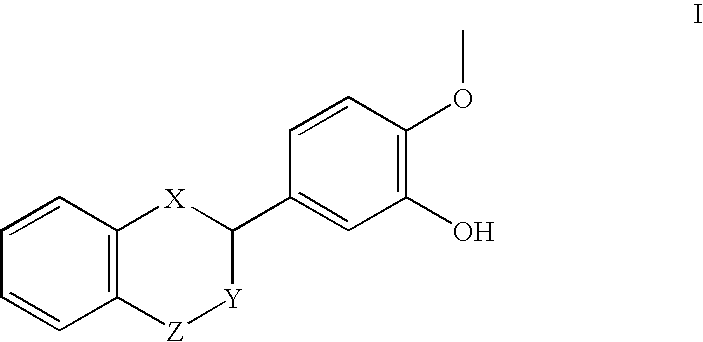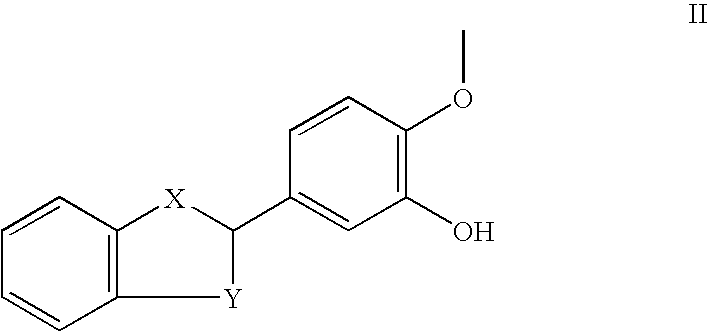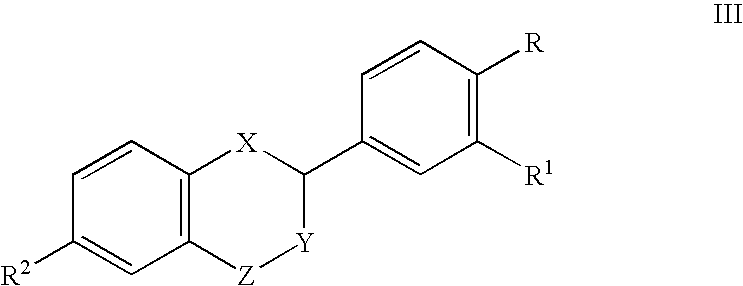Multi-modality flavored chewing gum compositions
- Summary
- Abstract
- Description
- Claims
- Application Information
AI Technical Summary
Benefits of technology
Problems solved by technology
Method used
Image
Examples
examples 1-78
[0296] The following examples 1-78 include a variety of modified release components, which may be selected for use in creating the dualities discussed herein. These components may be used in any region of the center-fill gum compositions. For instance, Example 2 provides encapsulated xylitol. The encapsulated sweetener xylitol of Example 2 could be added to one region of a center-fill gum and a sour agent, such as an acid, could be added to another region of the gum to create a flavor duality based on distinct tastants. The encapsulated adipic acid of Example 4 could also be employed.
[0297] Moreover, any of the encapsulated components provided in Examples 1-78 could be selected and combined with an encapsulated and / or unencapsulated component that is distinct from, complementary to or different in intensity from the exemplary component. For example, the encapsulated WS-3 (cooling agent) of Example 12 could be added to one region of a center-fill gum and an encapsulated and / or unenc...
example 1
Encapsulation of Glycyrrhizin—Polyvinyl Acetate Matrix
[0300] Composition:
IngredientWeight percentPolyvinyl Acetate75.00%Hydrogenated Oil3.75%Glycerol Monostearate1.25%Glycyrrhizin20.00%Total100.00%
Procedure: Polyvinyl acetate is melted at a temperature of about 90° C. in a high shear mixer such as extruder (single or twin screw) or sigma or Banbury mixer. The hydrogenated oil and Glycerol monostearate are then added to the molten polyvinyl acetate. Glycerrhizin is then added to the resulting mixture and mixed under high shear to completely disperse the ingredients. The resulting filled polymer melt is cooled and ground to produce a powdered material with a particle size of less than 420 microns. The encapsulated Glycyrrhizin matrix is stored in air tight containers with low humidity below 35° C.
example 2
Encapsulation of Xylitol—Polyvinyl Acetate Matrix
[0301] Composition:
IngredientWeight percentPolyvinyl Acetate55.00%Hydrogenated Oil3.75%Glycerol Monostearate1.25%Xylitol40.00%Total100.00%
Procedure: Polyvinyl acetate is melted at a temperature of about 110° C. in a high shear mixer such as extruder (single or twin screw) or sigma or Banbury mixer. The hydrogenated oil and Glycerol monostearate are then added to the molten polyvinyl acetate. Xylitol is then added to the resulting mixture and mixed under high shear to completely disperse the ingredients. The resulting filled polymer melt is cooled and ground to produce a powdered material with a particle size of less than 420 microns. The encapsulated Glycyrrhizin matrix is stored in air tight containers with low humidity below 35° C.
PUM
 Login to View More
Login to View More Abstract
Description
Claims
Application Information
 Login to View More
Login to View More - R&D
- Intellectual Property
- Life Sciences
- Materials
- Tech Scout
- Unparalleled Data Quality
- Higher Quality Content
- 60% Fewer Hallucinations
Browse by: Latest US Patents, China's latest patents, Technical Efficacy Thesaurus, Application Domain, Technology Topic, Popular Technical Reports.
© 2025 PatSnap. All rights reserved.Legal|Privacy policy|Modern Slavery Act Transparency Statement|Sitemap|About US| Contact US: help@patsnap.com



